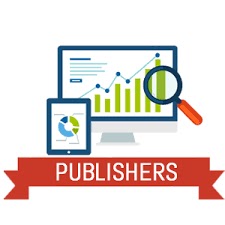Months before my book, Tides: The Science and Spirit of the Ocean, came out, I teamed with several publicists to build a twelve-month, 100-event tour. Yes – 100!
We targeted the coastal regions of North America, including Canada and Alaska. We booked events at universities, book stores, grammar schools, breweries, museums, aquariums, libraries, Audubon Societies, surf shops, outdoor stores (L.L.Bean, REI), land trusts, literary conferences and festivals, science centers, and specialty clubs (yacht clubs, book clubs, and the Explorers Club). The tour was shaped, of course, by the fact that my book is non-fiction and about the ocean.
None of the publishing professionals I worked with had seen a tour this large, or even close. They thought I was crazy.
It’s now August. The book has been out six months and I’ve given 75 talks in about 60 cities and towns. Here are 13 things I’ve learned:
1. Events drive media; media drives sales
The speaking event itself is important, but what happens around it is even more important. My publicist often described events as “anchoring,” because they’re the foundation on which media attention is built. Even if your event itself draws a small audience, hundreds of people — maybe thousands or tens of thousands — will learn about your book through event-driven media – radio, newspaper, or TV. The event is the pebble thrown into the pond.
2. Plan ahead
Many of the best speakers series are planned six or eight months in advance. If you get in early, you’ll have more flexibility in scheduling. Be open and persistent. Sometimes good things take a long time to happen, and sometimes they don’t. Don’t force it: your event will be more successful if the organizers are excited about having you and claim full ownership for it.
3. Find good partners
If you schedule events with groups that have well-established and well-attended speaker programs, they’ll have nice venues, good tech support, and an ability and willingness to spread the word. (Don’t be your own producer or schedule with a group that hasn’t done this before!) Some groups are nationwide, like The Audubon Society, so once you get in with one, the door opens to others.
Some of my best events involved multiple partners. In Port Angeles, Washington, for example, we encouraged the local bookstore to partner with the library, college, local science center, and the National Oceanographic and Atmospheric Administration (NOAA). We got lots of publicity and a hundred people turned out for the talk. One organization takes the lead; the rest help spread the word (they get their name on it, which should make them happy). Another good partner was the Nature Conservancy of Canada, who sponsored four great events in Nova Scotia and New Brunswick (around the Bay of Fundy). The events were scheduled, catered, and well publicized by the NCC.
4. The Goldilocks Scenario
Medium-sized cities are often easier to book an event, get media attention, and attract a good-sized audience. In the big cities you’re competing with many other worthy events. We scheduled talks at most of the major coastal cities – LA, Seattle, Boston, New York, D.C, etc. — but had some of our most successful events in mid-sized towns like Port Townsend, WA, Astoria, OR, and Santa Barbara, CA, on the west coast, and Camden, ME, Boothbay, ME, Woods Hole, MA, and Martha’s Vineyard, MA on the east coast. This doesn’t mean you should focus only on mid-size and smaller towns. It’s not either/or; it’s both/and.
5. Midweek evenings are the sweet spot
Weekend or day events tend to draw smaller crowds.
6. Universities, no. Bookstores, maybe
If your goal is to sell books and get the word out, I recommend staying away from universities. The audiences are usually small, less attentive, and made up mostly of students who don’t have the money to buy books (nor the time to read outside their assigned texts). Bookstores are a natural, but your event will almost certainly be scheduled during business hours, which can be distracting to both you and your audience. Additionally, bookstores tend to schedule a lot of author events, which means yours will not get special attention from either the bookstore staff or the media. The good thing about a bookstore event, however, is it allows you to meet the staff. If they like you, they’ll recommend your book.
7. Intangibles matter, too
I agreed to give a talk at the Library of Congress because, well, an author just doesn’t say no to that. I flew to LA to be on a panel exploring “Memoir and Travel” with Mark Kurlansky at the LA Times Book Festival. I think I sold three books, but I wouldn’t trade the experience for anything. And, for a favor and because I like kids, I agreed to meet with 80 grammar school kids in Santa Cruz.
8. You’ll pay – literally
Don’t expect anyone to care as much about your book as you do. And don’t expect anyone to work as hard as you will. For free. You won’t get paid for giving talks (occasionally you’ll receive a token $100 or $200), and most publishers have limited funds to support a tour.
9. Treat your presentation seriously
Develop it with the same care you gave your book. Keep it to 35-40 minutes and allow time for questions afterward. Memorize it. Read from the book, but no more than five minutes. Don’t give everything away; leave them wanting more. Send a suggested script for your introduction, as well as a press kit with links and photos for the venue to use for advertising. If you have technical needs (I have images and a short video), bring a kit of connectors that will allow you to plug into any system, and show up an hour early for testing. I even brought my own speaker (small but powerful) that saved me many times.
10. Sometimes you’re lucky and sometimes you’re not
Luck has many dimensions, and it always plays a role. A blizzard blew up on the eve of my talk at the Harvard Bookstore. Only fifteen people showed up. At Providence Library, Rhode Island, my event landed on the first sunny day of spring. It was my smallest audience – nine. On the other hand, The Oregonian printed a review two days before my talk at the Oregon Museum of Science and Industry, and I was interviewed on NPR the day of. We sold out the 320-seat theater and turned away 70
Every author has a story of reading to an audience of one or two. It happens. Don’t fret or judge. See the big picture. Do your job. In setting up my tour, we aimed for audiences of 50 or more. In the end, we ranged from 9-320, with an average of 70. One advantage of having lots of events is that you’re less inclined to get attached to the success or failure of any one of them.
11. Booksellers and books sold
Don’t handle books yourself, if possible. Have a local bookstore do it (you have enough to do!). So far, actual book sales have varied wildly from event to event, with no apparent reason. Sometimes 10% of the audience bought them, and sometimes 100%, with an average of about 25%. Remember that there will be couples in the audience who will buy just one, if they buy at all. Book sales tend to begin a couple weeks prior to an event (assuming there’s publicity) and continue for a couple weeks after, so total books sold for each appearance could be double or triple what you sell at the event itself.
12. Drink water. Swim at the YMCA
Touring is tough on the mind and body. It’s a workshop. A marathon. If you care about what you eat and drink and if you thrive on exercise, as I do, the road is especially challenging. I drink lots of water, especially when I’m on a plane. I also try to drink less alcohol, generally, and take walks and swim at the YMCA. They saved me!
13. Why tour at all?
When a new book is released, authors traditionally embark on a 10-15 event tour, covering 4-6 major cities. With the growth of social media, where you can reach thousands of people at a key-tap, some say tours are a thing of the past. My experience is otherwise. The key-tap approach is important, but there’s nothing more valuable than engaging with people face to face, especially about a subject you – and they – care about. The results of even the briefest encounter can be surprising and far-reaching.
Almost every author I know complains about how little their publisher did to promote their book. My experience with my first book, Talking on the Water, was so disappointing that I decided to hire an independent publicist for this one. My rationale was this: If I was going to spend seven years researching and writing this book, I wanted a publicity effort to match. From the start, I vowed that I would leave no crumbs of regret on the table – either in the writing or in the promotion. By year’s end, I’ll have spent a lot of money and been away from home about 120 days. But I’ve left no crumbs.
Culled from Writers Digest








.jpg)


